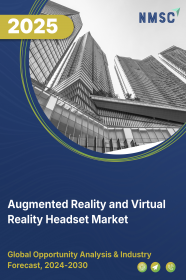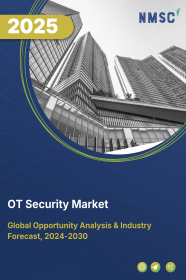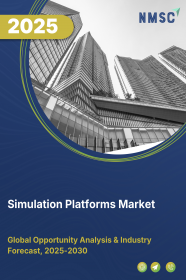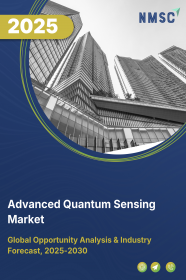
Augmented Reality and Virtual Reality Headset Market by Technology (Virtual Reality (VR) Headsets, Augmented Reality (AR) Headsets, and Extended Reality (XR) Headsets), by Display Type (OLED Displays, LCD Displays, and Others), by Application (Enterprise, and Consumer), and by Industry Vertical (Entertainment & Media, Aerospace & Defense, Manufacturing, Healthcare, Gaming, Education, Retail, Telecommunication, and Others) - Global Opportunity Analysis and Industry Forecast, 2022 – 2030
US Tariff Impact on Augmented Reality and Virtual Reality Headset Market
Trump Tariffs Are Reshaping Global Business
Market Definition:
The Augmented Reality and Virtual Reality Headset Market size was valued at USD 4.48 billion in 2021 and is predicted to reach USD 105.69 billion by 2030 at a CAGR of 35.3% from 2022 to 2030.
In terms of volume, Global XR headset shipments are expected to grow to 271 million units in 2030 from 11 million units in 2021. Augmented reality (AR) is a technology that offers a versatile digital experience in the real world and provides real-time experience to the consumer. In comparison, virtual reality (VR) is a technology developed with the help of 3D programs that create an artificial world, different from a user’s surroundings. Extended Reality (XR) gadgets, which include AR and VR headsets, have changed how people use screens by creating new & exciting interactive experiences. These headsets are used in various industries such as education & training, healthcare, construction, and real estate for different purposes on a large scale. In education, the XR headsets are used to attract students’ attention by displaying 3D objects in the classroom. In construction areas, they are used to visualize working models and also, to take virtual tours before construction begins.
Market Dynamics and Trends:
The use of AR and VR in the healthcare sector has significantly contributed to the growth of the market. Surgeons use AR to view intricate areas inside the human body while performing minimally invasive surgeries. In contrast, VR is used to treat post-traumatic stress disorder (PTSD) and anxiety by displaying pictures of beaches, mountains, or rainforests that relax the patient’s mind. Also, AR and VR are in high demand in the gaming industry to provide gamers with simulated gameplay scenarios, sound, and other haptic feedback.
For instance, in April 2022, Meta announced that several VR games, such as Ghostbusters VR, Resident Evil 4, and NFL Pro Era, will be included in Meta’s Quest platform throughout the year.
Moreover, major car manufacturers such as BMW, Volkswagen, and Ford use AR and VR for designing and prototyping their cars. For instance, in April 2021, BMW launched its first AR tool, ‘BMW Virtual Viewer.’ This tool offers hands-free voice navigation and a BMW chatbot to customize the car’s interiors, exteriors, color, and tires, among others. The factors mentioned earlier significantly contribute to the growth of the market.
However, the high cost of these headsets and side effects such as eye strain while using AR and VR hamper the market growth. On the contrary, AR and VR, when integrated into the e-commerce sector for online shopping applications, such as L’Oréal, allow customers to try the makeup products virtually, or Lenskart letting customers identify the glasses based on their look is expected to create ample growth opportunities for the market in the coming years.
Market Segmentations and Scope of the Study:
The AR and VR headset market is segmented on the basis of type, application, industry vertical, and geography. On the basis of type, the XR headset market is segmented into standalone HMD, tethered HMD, screenless viewer, and others. Based on application, the market is categorized into enterprise and consumer. On the basis of industry vertical, the market is divided into entertainment & media, aerospace & defense, manufacturing, healthcare, gaming, education, retail, telecommunication, and others. The report contains the geographical breakdown and analysis of each of the above mentioned segments across four regions, namely North America, Europe, Asia-Pacific, and Rest of the World (RoW).
Geographical Analysis:
North America currently holds the dominant share of the XR headset market and is expected to maintain its dominance during the forecast period. Significant developments in AR/VR by key players like Google and Meta Platforms through acquisitions and product launches contribute to the market growth in the region.
For instance, in March 2022, Google announced the acquisition of the company, Raxium, which develops light displays used in AR hardware. The acquisition shows Google’s focus on manufacturing products based on AR and VR. Also, in July 2022, Meta Platforms launched new augmented and virtual reality headsets that will provide better graphics processing and power than the regular Meta Quest headset. It came with features such as eye tracking, new controllers, high-resolution displays for virtual reality, and external high-resolution cameras to simulate AR in color, which is expected to drive the market growth in this region.
On the other hand, the market in the Asia-Pacific is expected to show a steady growth trend due to the presence of local key manufacturers such as Tecknotrove Systems, AjnaLens, and Beijing ANTVR Technology Co. For instance, in August 2021, AjnaLens launched India’s First enterprise-grade AR Glasses and advanced XR software AjnaSuite, which can be used by enterprises for training purposes along with step-by-step guidance to their employees through holographic images. Also, supportive government initiatives for the production and usage of AR and VR in different industries are expected to drive the growth of augmented reality and virtual reality headsets in this region.
For instance, in March 2022, the Indian Government announced that it is increasingly using AR/VR to train military personnel and pilots to repair aircraft, increasing the efficiency of weapons and making tanks more resilient on the battlefield. Moreover, in June 2022, the Centre for Civil Society and Governance of The University of Hong Kong and Meta jointly announced a request for proposals for meta-AR/VR policy research in the Asia-Pacific region. This research initiative invites the academic community to support the responsible development of AR and VR technologies in the region.
Competitive Landscape:
The AR/VR headset market comprises various market players such as Meta (Oculus), Pico, Sony Corporation, DPVR, iQiyi, Nolo, Vuzix Corporation, Samsung Group, Apple, HTC, Vuzix Corporation, Samsung Group, Razer Inc., Avegant Corporation, Sony Corporation, Microsoft Corporation, Carl Zeiss AG, Novelis Inc., Google, Inc., and LG Electronics Inc. These market players have adopted various strategies such as product launch and innovation across various regions to maintain their dominance in the AR/VR headset market.
For instance, in May 2022, Google announced its new product, smart AR glasses, which feature live translations into multiple languages and display the result on the glasses. Also, in March 2021, Microsoft launched Mesh, a service to build apps for people to collaborate in augmented reality. These apps will allow people to interact with holographic items and talk to photo-realistic avatars using other devices such as PCs, phones, or virtual reality headsets.
Key Benefits:
-
The augmented reality (AR) and virtual reality (VR) headset market report provides a quantitative analysis of the current market and estimations from 2022 to 2030 to help stakeholders identify and capitalize on the prevailing market opportunities.
-
The study comprises a deep dive analysis of the AR/VR headset market trend, including the current and future trends for depicting the prevalent investment pockets in the market.
-
The information related to key drivers, restraints, and opportunities and their impact on the XR headset market is provided in the report.
-
The competitive analysis of the market players along with their market shares in the AR & VR headset market
-
The SWOT analysis and Porter’s Five Forces model are included in the study.
-
The report contains the value chain analysis of the market to provide a clear picture of the stakeholders’ roles in the value chain.
Key Market Segments:
By Technology
-
Virtual Reality (VR) Headsets
-
Tethered VR Headsets
-
Standalone VR Headsets
-
PC-based VR Headsets
-
-
Augmented Reality (AR) Headsets
-
Optical See-Through AR Headsets
-
Video See-Through AR Headsets
-
-
Extended Reality (XR) Headsets
-
Mixed Reality (MR) Headsets
-
360-Degree Immersive Headsets
-
By Display Type
-
OLED Displays
-
LCD Displays
-
Others
By Application
-
Enterprise
-
Large Enterprises
-
Small Enterprises
-
Medium-sized Enterprises
-
-
Consumer
By Industry Vertical
-
Entertainment & Media
-
Aerospace & Defense
-
Manufacturing
-
Healthcare
-
Gaming
-
Education
-
Retail
-
Telecommunication
-
Others
By Geography
-
North America
-
U.S.
-
Canada
-
Mexico
-
-
Europe
-
U.K.
-
Germany
-
France
-
Italy
-
Spain
-
Rest of Europe
-
-
Asia-Pacific
-
China
-
India
-
Japan
-
South Korea
-
Australia
-
Rest of Asia-Pacific
-
-
RoW
-
UAE
-
Saudi Arabia
-
South Africa
-
Brazil
-
Remaining countries
-
Key Players
-
Meta
-
PICO Immersive Pte.ltd.
-
Sony Corporation
-
DPVR
-
iQIYI, Inc.
-
Nolo
-
Samsung Group
-
HTC Corporation
-
Microsoft Corporation
-
Google, Inc.
-
LG Electronics Inc.
-
Pimax
-
Kopin Corporation
-
Apple Inc.
-
Goertek Inc.

















 Speak to Our Analyst
Speak to Our Analyst




















